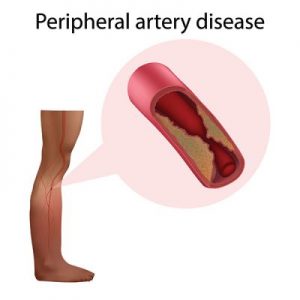- 404-363-9944
- Mon - Thur 8:00 - 5:00
- Fri 8:00 - 4:00
- Four Convenient Locations In Atlanta
From “Hot Spot” to Raw Spot: 5 Ways to Treat Blisters
It’s that time of year when many of us get outdoors after a long idle winter. The sunny weather makes it possible to finally go jogging or work in the garden. Unfortunately a lot of people overdue it and end up with sore muscles and painful blisters on their feet.
For the most part, blisters are caused when there is friction between your feet and shoes. Generally blisters are not a serious condition and can easily be treated at home. As well, there are certain treatments that can decrease the discomfort and pain.
Reduce the Pain
One of the best ways to lessen the pain is to protect the blister. By covering the area you ease irritation and lower the risk of infection. To cover, use soft gauze or an adhesive bandage. You can make a donut shaped dressing if it is especially sore. Avoid applying a lot of pressure as you place the bandage around the area. Also, make sure to change the dressing daily and to wash your hands thoroughly before touching the area to prevent infection.
Take Special Care
Stay as comfortable as possible so the blister can heal. For example, keep your feet comfortable by wearing loose fitting shoes to prevent rubbing. Also wear an extra pair of socks for padding. In addition, you should stay off your feet as much as possible to allow healing.
Antibiotic Ointments
Antibiotic ointment is helpful in preventing infections. Wash hands thoroughly before applying the ointment directly on the wound. You can find antibiotic ointments at most pharmacies and groceries. In addition, many specialists believe that applying apple cider vinegar can also help. It is said that apple cider vinegar has antibacterial properties and will prevent the blister from becoming infected.
Creams and Powders
Creams and powders are used to help reduce friction. It is motion and constant friction that can make the blister worse and cause irritation and more pain. Creams and powders are an easy way to help remedy the issues and allow it to heal. Simply pour the powder lightly into you sock before to put your shoes on. Likewise, some people feel that dusting baking soda in the sock will lower friction and also acts as an antibiotic which reduces swelling.
Draining a Blister
Generally it is best not to drain a blister unless it is very painful. This is because it can increase your chances of getting an infection. As well, according to WebMD, you should never drain a blister if you have diabetes, heart disease, cancer or HIV. You also need to allow the area’s skin to peel off naturally. As well, try not to touch the blister to avoid popping it prematurely.
If the blister is too painful and you need to drain it, make sure to wash your hands first. Also, clean the area around the blister before draining. Using a sterilized needle, gently insert the needle making a slight puncture near the edge. Leave the skin in place while the fluid drains out.
American Foot and Leg Specialists
It is best to consult with a foot specialist if you have a blister that is infected or very painful. In fact, an infection can quickly become a critical condition if left untreated. As well, you should see a podiatrist about every two to three months, particularly if you have diabetes or heart conditions.
One of the best podiatrists in the Atlanta area is the American Foot and Leg Specialists. They are renowned for their various foot therapies and treatments. As well, the American Foot and Leg Specialists have a highly knowledgeable team of physicians that has more than 100 accumulative years of experience.
If you have any questions or concerns, make an appointment with the professional staff at any of the four locations. Serving the South Atlanta Metro area including, Cobb County, Clayton County, Douglas County, Fayette County, Fulton County and Henry County. Hours are 8:00 AM to 5:00 PM Monday thru Friday.
If the blister is too painful and you need to drain it, make sure to wash your hands first. Also, clean the area around the blister before draining. Using a sterilized needle, gently insert the needle making a slight puncture near the edge. Leave the skin in place while the fluid drains out.


